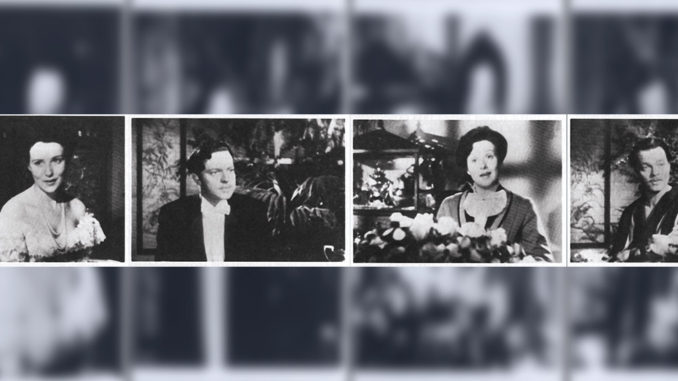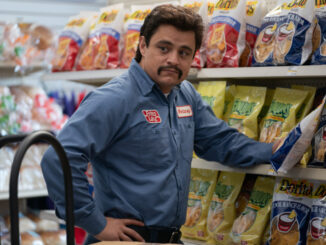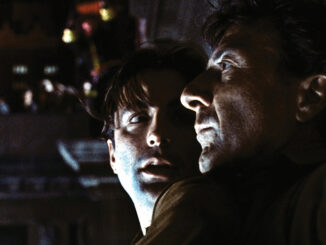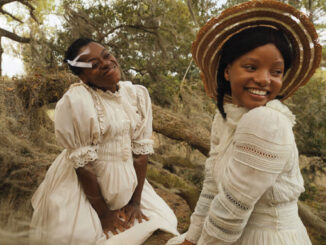
Citizen Kane is years ahead of its time in editing techniques, those incredible transitions, disorientation cuts. How much of that originated in the cutting room and how much was anticipated at the script stage?
Robert Wise:It’s very difficult to break a thing like that down. Many of the very effective areas of Kane––those marvelous mock matte dissolves––were all planned: I had nothing to do with them except to get the timing right when we got the shots and put them together. They were carefully planned between Orson Welles, Gregg Toland and the art director. Other areas would be the usual kind of thing one does as an editor; you do the first cut and show it to the director and he reacts positively or negatively––or asks for changes and wants you to try things. I did that with Orson as I would with anybody else.
Some areas I probably had more input into the final results: The breakfast table scene is a case in point. Not that it hadn’t been designed to do what it did, but it was a very tricky thing to get the correct timing. We played with that a long time, and it was in the cutting room where it was finally worked out the way it got in the picture. So that the actual rhythm of that whole marvelous sequence was established in the cutting room––not the concept, but the rhythm of it. Very often, an editor will sit in the projection room, he’ll see the thing and think he’ll know how it’s going to go, what the rhythm will be. And you’ll try it that way and start playing around with it and experimenting. That’s one of the great things about editing––that it’s something you can play with, try to perfect, try one thing then another. It’s a great, marvelous plastic toy.
How about your work with your editors?
RW: I had one man for quite a few years, Bill Reynolds. He wasn’t available when I did Andromeda Strain so I used Stu Gilmore. Then Bill came back to be with me on Two People and then when Hindenburg came along, Bill was tied up on that flying picture, The Great Waldo Pepper, so I needed somebody and I was looking around. Then Donn Cambern wrote me a letter, applied for the job, and he came in to see me. He had some good credits, although I didn’t know of him. I got a print of Cinderella Liberty and ran it. He came in and we started talking and mentioned working on the KEM. I had been intrigued by the potential of this and kind of wanted to get into it for a couple of years. So that was a factor in his favor.
Personality is very important when you’re going to work very closely with someone. It’s probably the longest marriage in film for the director. I met one or two people who I wondered about using, and I did a little more inquiring and decided just on the basis of personality that we wouldn’t have been as compatible as I’d want.
“I very much believe in letting your audience know eventually what they are supposed to be seeing and what the film’s supposed to be about.” – Robert Wise
As a director with that editor’s vision, do you think the great film should be, at least on an elemental level, comprehensible through its visual images alone, comprehensible to a deaf person?
RW: I suppose, ideally, yes. One has to think of the difference in films, in their nature. Some are much more silent, more able to tell their story in visual terms. Another may depend much more heavily on the interchange between actors, but it seems to me, as a visual medium, the more your film can tell of that story through the medium of visual aspects, the better it is.
But so few have that ability that Hitchcock does to be able to foresee the scene in advance as a series of shots.
RW: Sure, Hitch is a master of that. I very much believe in letting your audience know eventually what they are supposed to be seeing and what the film’s supposed to be about. I hate film that is misleading. After all, as an editor, you’re the audience.
Do you, as the editor-director, bring onto the set the sense of the final form the scene will take as a series of shots?
RW: For years there’s been the old adage that the film editor as a director would shoot less film because he would know editing and would know where everything was going to fit. Completely false, certainly in my particular case. Because as an editor, you know how much can be done with that film and with those various angles, much later, down at the cutting room. You’re inclined, I find, to over cover, to get that extra angle, that extra coverage. There’s nothing like having that extra protective close-up three months later when your shooting is finished and your actors are all scattered, and you can’t do anything else and you know you have that there in the can to cut to, to build the scene to eliminate some dialogue, to move something, to change the continuity.
To help us celebrate the 70th anniversary of the Motion Picture Editors Guild, our colleagues at the prestigious film journal Film Comment in New York have allowed us to reprint copy from their special 24-page section celebrating film editors––“Prime Cut”––which appeared in the March-April 1977 issue. While the bulk of their salute was a semi-exhaustive list of filmographies of the top 75 editors (Film Comment’s selection) from the United States, Great Britain and France, we decided to forego that element, since it only covered up to 1977––and besides, those credits are readily available today on IMDb. We retained their 75 choices, however, as well as other parts of their section: editors’ answers to questions about editing techniques and their best work, and an interview with Robert Wise about cutting Citizen Kane.
So, beginning above and continuing in the articles “Top 75 Picture Editors“, “My Best Work“, “Film Editors Forum” and “Prime Cut” , everything––save for some photos, captions and headlines––is the work of the Film Comment team from 1977. Special thanks to our writer Kevin Lewis and especially Film Comment’s Sayre Maxfield (who is still with the publication today) for making all of this happen. – The Editor





